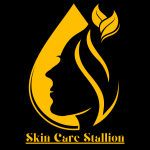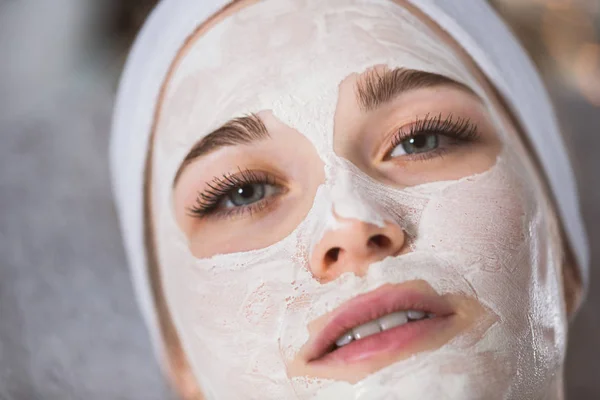What Is The Best Skincare Routine for Glowing, Healthy Skin: A Step-by-Step Guide to Radiant Results.
Unlocking the secret to radiant, healthy skin isn’t just about finding the right products—it’s about mastering the best skincare routine tailored to your skin’s unique needs. But with countless products and advice out there, how do you sift through the noise and craft a routine that truly works?
Whether you’re a skincare novice or a seasoned beauty enthusiast, discovering the ideal regimen can transform not just your complexion, but your confidence, too. Ready to glow from the inside out? Let’s dive into what makes a skincare routine truly the best.
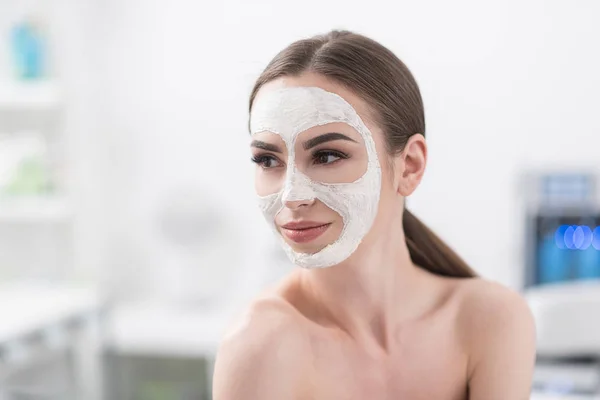
What Is The Best Skincare Routine
The best skincare routine is one that cleanses, hydrates, and protects your skin. It’s important to tailor it to your skin type, whether oily, dry, or combination. Consistency is key for healthy, glowing skin.
Start with a gentle cleanser, follow with a toner, apply a moisturizer, and finish with sunscreen. Adjust your routine as needed based on seasonal changes or skin concerns.
Understanding Your Skin Type
Understanding your skin type is essential to crafting the best skincare routine. Your skin could be oily, dry, combination, or sensitive. Each type requires specific products to address its unique needs. Oily skin benefits from oil-free moisturizers and salicylic acid cleansers, while dry skin thrives on rich, hydrating creams with hyaluronic acid.
Combination skin might need different products for different areas of the face, and sensitive skin requires gentle, fragrance-free options. Knowing your skin type helps you choose the right ingredients, which is crucial for achieving a clear, healthy complexion. Regularly assessing your skin can help you maintain a routine that evolves with your skin’s needs.
The Importance of Cleansing
Cleansing is the first and most crucial step in any skincare routine. It removes dirt, oil, and impurities that can clog pores and lead to breakouts. A gentle cleanser that matches your skin type is key. If you have oily skin, opt for a foaming cleanser that helps control excess oil.
Dry skin benefits from a hydrating cleanser that won’t strip the skin’s natural moisture. For those with sensitive skin, a mild, fragrance-free cleanser is best. Cleansing in the morning and at night ensures your skin stays fresh, balanced, and ready to absorb the next steps in your routine. This step lays the foundation for effective skincare.
The Role of Toners and Serums
Toners and serums are the powerhouse duo in a skincare routine. A toner helps to balance your skin’s pH after cleansing, prepping it to better absorb serums and moisturizers. Look for toners with soothing ingredients like aloe vera or rose water if you have sensitive skin, or with exfoliating acids like glycolic acid if you’re targeting dullness or uneven texture.
Serums are concentrated formulas packed with active ingredients like vitamin C for brightening, hyaluronic acid for hydration, or retinol for anti-aging. Applying serums allows you to address specific concerns such as wrinkles, dark spots, or acne. These products are essential for refining skin texture and boosting radiance.
Hydration and Moisturization
Hydration is crucial in every skincare routine. Even oily skin needs moisture. A good moisturizer locks in hydration and strengthens the skin barrier. Gel-based moisturizers are great for oily skin, while richer creams are ideal for dry skin.
If you have combination skin, consider using a lighter moisturizer during the day and a heavier one at night. Ingredients like hyaluronic acid, ceramides, and glycerin help attract and retain moisture, ensuring your skin stays plump and smooth. Keeping your skin hydrated not only improves its texture but also enhances its ability to protect against environmental stressors, making this step vital in your daily regimen.
Sun Protection: The Non-Negotiable Step
Sun protection is arguably the most critical step in any skincare routine. UV rays can cause premature aging, hyperpigmentation, and increase the risk of skin cancer. A broad-spectrum sunscreen with at least SPF 30 should be applied every morning, regardless of the weather.
If you’re outdoors for extended periods, reapply every two hours. Sunscreen helps to prevent sun damage and keeps your skin looking youthful. Incorporating SPF into your daily routine is non-negotiable, as it provides the most effective defense against the harmful effects of the sun. Consistent use of sunscreen is the best way to maintain a healthy complexion over time.
Adjusting Your Routine for Seasons and Age
Your skincare routine should evolve with seasonal changes and as your skin ages. In the winter, skin tends to be drier, so incorporating a heavier moisturizer and a hydrating serum can help. During the summer, lighter products and more frequent sunscreen application are necessary.
As you age, your skin may require additional support with anti-aging products like retinoids or peptides. Regularly updating your skincare routine ensures it remains effective and responsive to your skin’s changing needs. By adjusting your regimen according to environmental factors and age, you can maintain healthy, vibrant skin throughout the year.
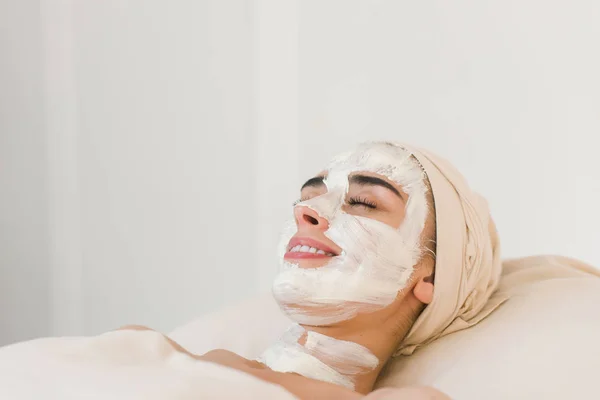
Understanding Your Skin Type
Skin Types Overview
Oily Skin
Oily skin produces excess sebum, leading to a shiny appearance and enlarged pores. Common issues include acne, blackheads, and frequent breakouts. Causes often involve genetics, hormonal changes, and environmental factors.
Dry Skin
Dry skin lacks sufficient moisture, resulting in rough, flaky, and sometimes itchy patches. It is prone to irritation and may feel tight, especially after cleansing. Causes include harsh weather conditions, over-washing, and aging.
Combination Skin
Combination skin exhibits characteristics of both oily and dry skin. Typically, the T-zone (forehead, nose, and chin) is oily, while the cheeks are dry or normal. This skin type can face a mix of issues like breakouts in the oily areas and dryness elsewhere. Causes can include genetic factors and inconsistent skincare routines.
Sensitive Skin
Sensitive skin is easily irritated and prone to redness, itching, and inflammation. It reacts negatively to certain ingredients, weather changes, and stress. Common causes include underlying conditions like rosacea or eczema and using harsh skincare products.
Normal Skin
Normal skin has a balanced oil and moisture level, appearing smooth and clear. It’s less prone to breakouts or irritation. The benefits include easier maintenance and fewer skincare issues.
How to Determine Your Skin Type
DIY Skin Test
To identify your skin type, start with a simple at-home test. Cleanse your face with a mild cleanser and wait for an hour without applying any products. Observe your skin’s condition—if it feels tight, you might have dry skin; if it appears shiny, especially in the T-zone, you likely have oily or combination skin.
Normal skin will feel comfortable without any noticeable tightness or oiliness. Sensitive skin may show signs of redness or irritation.
Consulting a Dermatologist
If you’re unsure or have ongoing skin issues, consulting a dermatologist is advisable. A professional can accurately determine your skin type and recommend the best products and treatments.
Importance of Knowing Your Skin Type
Product Compatibility
Matching your skincare products to your skin type is crucial for effective results. Using the wrong products can lead to breakouts, dryness, or irritation. For instance, oily skin benefits from oil-free and non-comedogenic products, while dry skin needs rich, hydrating formulas.
Preventing Issues
Understanding your skin type helps prevent common skincare mistakes. This knowledge allows you to avoid products and routines that may harm your skin, leading to a healthier complexion and better overall skin health.
Essential Steps in a Skincare Routine
Cleansing
Importance of Cleansing
Cleansing is the foundation of any effective skincare routine. It removes dirt, excess oil, and makeup, which can clog pores and lead to breakouts. A clean face allows other products to penetrate better and work more effectively.
Types of Cleansers
There are various types of cleansers to suit different skin needs. Gel cleansers are great for oily skin, while foam cleansers work well for normal to combination skin. Cream cleansers are ideal for dry or sensitive skin, and oil-based cleansers can effectively dissolve makeup. Micellar water is a gentle option for all skin types, particularly sensitive skin.
Choosing the Right Cleanser
Your skin type is the key factor in selecting the right cleanser. For oily or acne-prone skin, opt for gel or foam cleansers. Dry or sensitive skin types benefit from creamy or oil-based cleansers. Combination skin may require a balanced formula.
How to Cleanse Properly
Start by wetting your face with lukewarm water. Apply the cleanser to your face in circular motions, focusing on areas prone to buildup, such as the T-zone. Rinse thoroughly and pat your skin dry with a clean towel. Always cleanse twice daily—morning and night.
Toning
What is Toning?
Toning helps to balance the skin’s pH, tighten pores, and remove any remaining impurities after cleansing. It prepares the skin to absorb moisturizers and serums more effectively.
Types of Toners
Toners come in different forms to address various skin concerns. Astringent toners are best for oily and acne-prone skin, while hydrating toners are ideal for dry or dehydrated skin. Exfoliating toners, which contain alpha or beta hydroxy acids, can help improve skin texture and tone.
Best Toners for Each Skin Type
For oily skin, choose an astringent toner with ingredients like witch hazel or salicylic acid. Dry skin benefits from hydrating toners containing hyaluronic acid or glycerin. Sensitive skin types should look for alcohol-free toners with soothing ingredients like chamomile or aloe vera.
Moisturizing
Why Moisturizing is Crucial
Moisturizing is essential for keeping your skin hydrated, protecting the skin barrier, and preventing premature aging. It locks in moisture, keeping your skin soft and smooth.
Types of Moisturizers
Moisturizers come in creams, gels, lotions, and ointments. Creams are heavier and suitable for dry skin, while gels are lightweight and perfect for oily skin. Lotions offer a balanced option for normal to combination skin, and ointments provide intensive hydration for very dry or compromised skin.
Choosing a Moisturizer
Select a moisturizer based on your skin type and concerns. For oily skin, look for oil-free or gel-based formulas. Dry skin needs richer creams, while combination skin benefits from a lighter lotion. Anti-aging concerns may require moisturizers with added ingredients like retinol or peptides.
Application Tips
Apply moisturizer to damp skin to enhance absorption. Use upward strokes, starting from the neck and moving toward the face. Be gentle around the eye area and don’t forget your neck and décolletage.
Sun Protection
Importance of Sunscreen
Sunscreen is a non-negotiable step in skincare. It protects your skin from harmful UV rays, preventing sun damage, premature aging, and reducing the risk of skin cancer.
Types of Sunscreens
Sunscreens are either chemical or mineral-based. Chemical sunscreens absorb UV rays, while mineral sunscreens reflect them. Choose an SPF level based on your sun exposure, with SPF 30 being a good daily option.
How to Apply Sunscreen
Apply sunscreen generously, covering all exposed areas. Use about a nickel-sized amount for your face. Reapply every two hours, especially if you’re outdoors or after swimming. Remember, sunscreen should be the last step in your morning skincare routine.
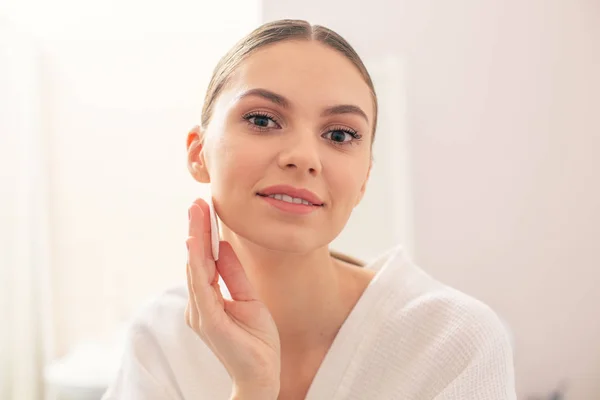
Additional Skincare Steps
Exfoliation
What is Exfoliation?
Exfoliation is the process of removing dead skin cells from the surface of your skin. This step enhances skin texture, promotes cell turnover, and helps your other skincare products absorb more effectively.
Exfoliation can be done using two primary methods: physical exfoliation and chemical exfoliation. Physical exfoliation uses scrubs or brushes to slough off dead skin, while chemical exfoliation involves acids like AHAs or BHAs to dissolve dead cells.
How Often to Exfoliate?
The frequency of exfoliation depends on your skin type. Oily or combination skin may benefit from exfoliating 2-3 times per week. Dry or sensitive skin should stick to once a week to avoid irritation. Regular exfoliation can help maintain smooth, glowing skin, but over-exfoliation can lead to redness and sensitivity.
Choosing an Exfoliator
Selecting the right exfoliator is crucial. Look for ingredients like salicylic acid for acne-prone skin, lactic acid for gentle exfoliation, or glycolic acid for more intensive treatment. Physical exfoliants should have fine, rounded particles to prevent microtears. Exfoliating serums, pads, and cleansers are popular choices.
Serums and Treatments
What Are Serums?
Serums are concentrated formulas designed to target specific skin concerns. They have smaller molecules than moisturizers, allowing active ingredients to penetrate deeper into the skin. Serums can address issues like fine lines, hyperpigmentation, or dehydration.
Common Active Ingredients
Serums often contain powerful ingredients like hyaluronic acid for hydration, retinol for anti-aging, and vitamin C for brightening. Niacinamide, peptides, and antioxidants are also commonly found in serums. Each ingredient serves a unique purpose and can be combined for a comprehensive skincare routine.
How to Incorporate Serums
When using serums, layering is key. Apply serums after cleansing and toning but before moisturizing. Start with lighter, water-based serums and finish with oil-based ones. Depending on your skin’s needs, you can use serums both morning and night, but some ingredients like retinol should be used only in the evening to avoid sun sensitivity.
Masks
Purpose of Face Masks
Face masks provide an intensive treatment to address specific skin concerns like hydration, detoxification, or brightening. They deliver a concentrated dose of active ingredients, making them a powerful addition to any skincare routine.
Types of Masks
There are various types of face masks, each with its own benefits. Clay masks help detoxify and reduce excess oil, while sheet masks deliver hydration and nutrients. Peel-off masks exfoliate and unclog pores, and overnight masks provide long-lasting moisture as you sleep.
How to Use Masks
To maximize the benefits of face masks, apply them on clean skin after exfoliating. Follow the instructions for how long to leave the mask on—usually 10-20 minutes. Use masks 1-2 times a week, depending on your skin’s needs. After removing the mask, follow up with your regular skincare routine.
Eye Creams
Why Eye Creams Are Important
The delicate skin around the eyes is prone to dark circles, puffiness, and wrinkles. Eye creams are specially formulated to address these concerns, offering targeted hydration and treatment to this sensitive area.
Choosing an Eye Cream
When selecting an eye cream, look for key ingredients like caffeine to reduce puffiness, hyaluronic acid for hydration, and retinol to smooth fine lines. Vitamin C is also effective for brightening dark circles.
Application Techniques
Apply eye cream gently using your ring finger to avoid pulling on the skin. Dab a small amount of cream under the eyes, along the orbital bone, and tap lightly until absorbed. Use eye cream both morning and night for best results.
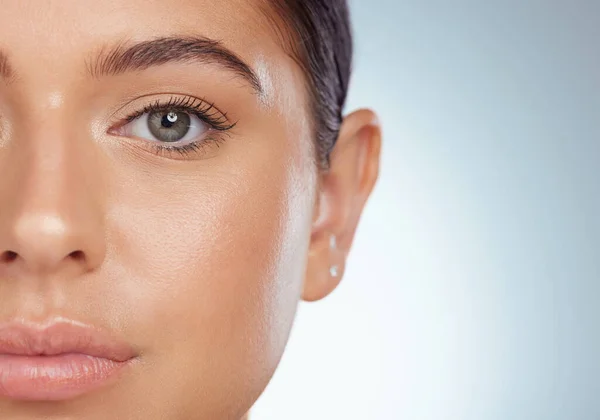
FAQs
What is the best skincare routine for glowing skin?
The best skincare routine for glowing skin typically includes cleansing, toning, moisturizing, and sun protection. Start with a gentle cleanser to remove dirt and impurities, followed by a hydrating toner to balance your skin’s pH. Moisturize with a product suited to your skin type, and always finish with a broad-spectrum SPF during the day.
How often should I follow my skincare routine?
It’s essential to follow your skincare routine twice a day—once in the morning and once before bed. This helps maintain skin hydration, clear pores, and protect your skin from daily environmental stressors.
What ingredients should I look for in my skincare products?
Look for ingredients like hyaluronic acid for hydration, vitamin C for brightening, retinol for anti-aging, and niacinamide for reducing inflammation and improving skin texture. Tailor your ingredient choices to your specific skin concerns.
Can I skip any steps in my skincare routine?
While it’s best to follow a complete routine, some steps can be skipped depending on your skin type and lifestyle. For example, if you have oily skin, you might use a lighter moisturizer. However, cleansing and sun protection should never be skipped.
Is exfoliation necessary in a skincare routine?
Yes, exfoliation is crucial for removing dead skin cells and promoting skin renewal. However, it should be done 2-3 times a week to avoid irritation. Choose a chemical exfoliant like glycolic acid or a physical exfoliant with gentle particles.
How do I choose the right products for my skin type?
Identify your skin type—whether oily, dry, combination, or sensitive. Choose products that specifically address your skin’s needs. For example, use oil-free and non-comedogenic products for oily skin, and rich, hydrating products for dry skin.
Can I use the same skincare routine year-round?
Your skincare routine might need adjustments depending on the season. In winter, your skin may require more hydration, while in summer, lightweight and oil-free products might be more appropriate. Always listen to your skin’s needs.
What is the role of sunscreen in a skincare routine?
Sunscreen is a critical part of any skincare routine. It protects your skin from harmful UV rays that can cause premature aging, sunburn, and increase the risk of skin cancer. Use a broad-spectrum SPF 30 or higher every day, even on cloudy days.
How long does it take to see results from a skincare routine?
It can take anywhere from 4 to 12 weeks to see noticeable improvements in your skin. Consistency is key—stick to your routine and be patient, as your skin needs time to adjust and respond to new products.
Can I combine different active ingredients in my routine?
Yes, but it’s important to be cautious when combining active ingredients like retinol, vitamin C, and AHAs/BHAs. Some combinations can cause irritation. It’s best to introduce one active ingredient at a time and see how your skin reacts before layering.
Conclusion
In conclusion, the best skincare routine is one that is personalized to meet the unique needs of your skin. It should incorporate the essential steps of cleansing, moisturizing, and sun protection, while also including targeted treatments such as serums or exfoliants based on your specific skin concerns.
Consistency is key, as regular care can lead to healthier, more radiant skin over time. By paying attention to your skin’s responses and adjusting your routine as needed, you can create a regimen that effectively supports your skin’s health and appearance, helping you achieve and maintain a glowing complexion.
